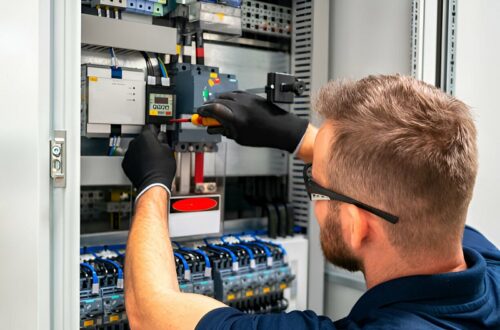
Guide to Safety Standards Every Electrician Should Follow
Ask any seasoned electrician about the most critical element in their line of work, and they will tell you – it’s safety. But why is safety so paramount? Why is it so crucial that electricians adhere to a set of safety standards? How do these protocols protect the electrician, property, and the people living in the dwelling where electrical work is being done?
The field of an electrician is one laden with hazards. One small misstep could lead to a whirlwind of consequences—from electrical shocks to fire hazards. This blog post delves into the indispensable safety standards every electrician should adhere to.
Safety standards are not just about staying safe at work; they also influence the solidity and durability of your workmanship, contribute to client satisfaction, and impact your reputation as a detail-oriented, professional electrician who takes safety seriously. So, let us unravel this crucial topic that blends together the elements of safety, skilled craftsmanship and exceptional professional service.
Unfolding the Safety Standards
In any trade, it’s crucial to grasp the ‘why’ before understanding the ‘how’. Why are safety standards essential in electrical work? To put it simply, they protect property and lives, including that of the electrician. Apart from their primary role of safety assurance, these standards also serve as a benchmark of professionalism and competence in the industry.
Standards like the National Electrical Code (NEC) provide a set of guidelines designed to shield people and property from electrical hazards. Understanding these guidelines and how to apply them is crucial for an electrician.
Apart from the NEC, many other international and regional standards exist. Electricians should strive to understand, comply and stay updated with these dynamic operational safety standards, which are often revised based on new knowledge and technology.
Mastering the Tool Territory
Any work, especially skill-oriented trades like electrical work, is only as good as the tools that help accomplish it. How should an electrician decide what tools to use and when? What safety precautions ought an electrician to heed while handling these tools?
An integral part of an electrician’s safety protocol is using the right tools. From choosing insulated tools to maintaining and inspecting them regularly —tool safety measures can make a considerable difference in ensuring an electrician’s safety.
The Art of Personal Protective Equipment
In case of electrical work, the believe of “Stitch in time, saves nine” is very much applicable. Therefore, donning personal protective equipment (PPE) can sway the scales of safety significantly in the electrician’s favour. But what kind of PPE should an electrician use? Is its usage situational or all-time?
PPE, such as safety glasses, electrician’s gloves, hard hats, and flame-resistant clothing, help protect the electrician from risks of electric shocks, burns, and falling objects. Using PPE is as important as knowing when and how to use it accurately.
The Crucial Element of Training
Many a time, safety lies not just in gears and equipment but in knowledge and readiness. How crucial is continuous training for an electrician? What kind of safety training should an electrician seek?
Every electrician should receive training on workplace safety procedures, emergency response, and first-aid. Continuous learning and adaptability to revised guidelines and safety practices are essential to stay safe and efficient on the job.
Pros and Cons of Safety Standards
Realizing the importance of safety standards could be the game-changer in an electrician’s profession. Can adherence to safety standards enhance an electrician’s reputation? How could ignoring safety standards impact the electrician’s work or clientele?
Adhering to safety standards does far more than minimizing hazards. It boosts client confidence, increases job satisfaction, enhances professionalism, and leads to a better reputation in the market. However, ignoring these standards might lead to unwanted consequences, from damage to property and reputational loss to heavy fines or, worse, loss of life.
Conclusion
Safety should never be compromised, particularly in professions where the risk potential is high like in electrical work. Safety standards in the electrical industry serve as an effective shield against potential hazards.
Mastering these safety standards is not just about individual protection; it brings forth the fine balance between life, property, professionalism, and customer satisfaction. By using the right tools effectively, wearing protective gear diligently, staying abreast with ongoing learning and training, and religiously adhering to set protocols and guidelines – an electrician can conquer the terrain of electrical safety.
The journey of an electrician may seem daunting but adherence to safety protocol paves the way for a safer and rewarding journey ahead. Turn safety into a habit, and it will become your second nature. Remember, a safe electrician is a successful electrician.




